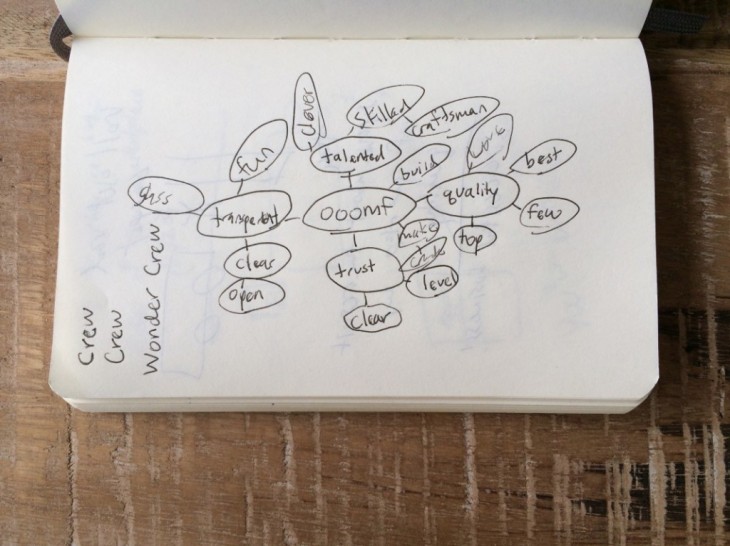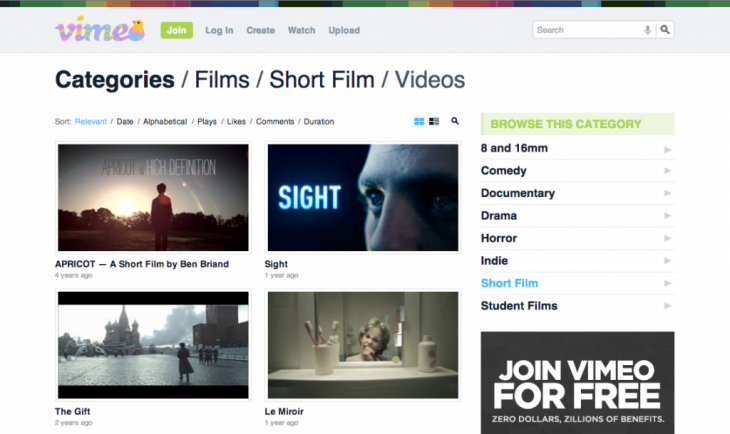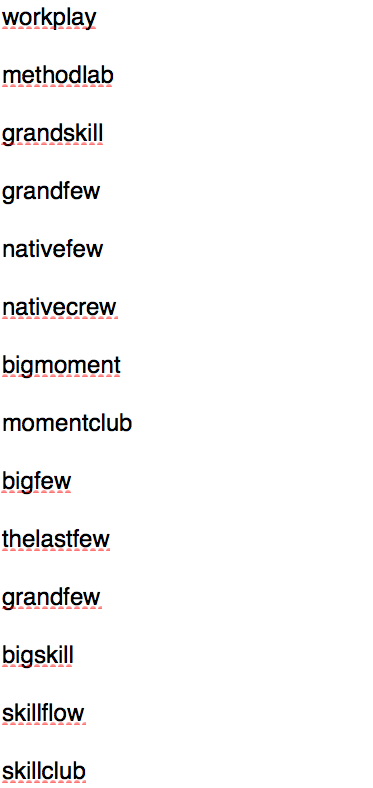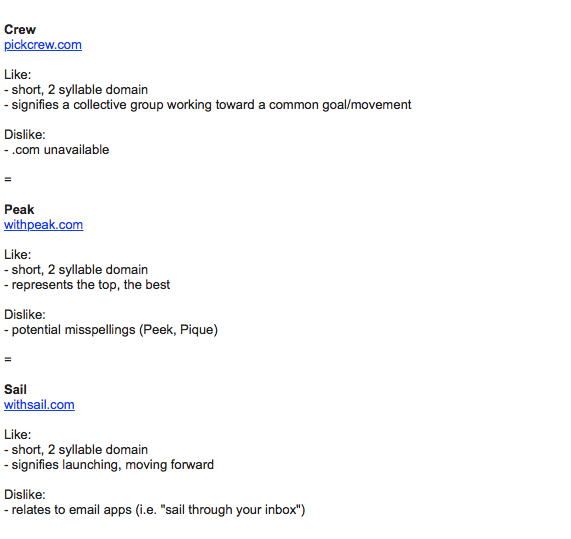
Mikael Cho is the co-founder of Crew, a network that connects short-term software projects with handpicked developers and designers. This post originally appeared on the Crew blog.
I’ve heard of many different approaches for how people come up with names for their companies.
Some people opt to hire branding agencies while others hire naming consultants. And some just figure it out themselves.
I don’t know which of these methods is best but when my co-founders and I decided we needed a new name for our company, we did as we usually do with most things—try to figure it out ourselves first.
The process wasn’t easy.
Some names we loved were already being used by similar companies. Many names had no good domain options available. But after about three months, we eventually found the right one.
I thought it might be helpful to share our process with you before you jump into your next name game.
Why?
At the beginning of our search for a new name, I wrote to Nate Weiner, founder of Pocket (formerly Read It Later). I asked Nate about some takeaways from his company’s rebrand to Pocket and he was awesome enough to share his thoughts.
One of the main things that stuck with me was when Nate wrote,
“The first question to ask yourself is why do you want to rebrand? What does your company and product mean? Where do you want to take it into the future? Does your existing or new name let you do that?”
Our current name, ooomf, didn’t mean anything. It was a made up word that we created to be memorable because it was awkward. Although it was unique, it was impossible to spell. And it didn’t represent where we were headed with our company.
We knew it was time to find a name that fit with what our company was now and where we are going in the future.
Find “good words”
Starting the search for a new name is exciting and daunting at the same time because you can pick anything. To start heading in the right direction, we first created a list of words that described our company.
After creating this list, I walked around looking at the names of boutiques and the descriptions on restaurant menus to spark inspiration for words that could relate to our company.
Words like “fresh” and “crisp” would catch my eye so I jotted them down in my notes to revisit later. We didn’t worry about getting domain names or Twitter handles yet. The goal at this point was simply to find a lot of words we liked that could be related to the words that described our company.
Over the next few weeks, I set aside about a half an hour each day to free write as many random words I could think of. Not all the words were good, but this process helped cast a wide net of potential thoughts that were the roots for finding a name.
Another place we looked for “good words” was on Vimeo, Kickstarter, and websites with strong copywriting like Apple.
Artists on Vimeo and Kickstarter often use unique words as names for their productions which can spark more ideas for names.
We also looked for interesting words by paging through the dictionary amd clicking through this random noun generator website.
While you might not end up choosing any of these words as your company name, they can be jumping off points that might eventually lead you to something.
Talk with people outside your company to find more “good words”
Without sharing any of the words we had come up with, I wrote to a few people outside our company to try and come up with some more words.
My mom made a few suggestions. My sister did to. We also worked with a writer to come up with a few more.
Even if the people you speak with don’t immediately give you the idea for the right name, they’ll bring a different perspective and could share some potential names that help create new connections in your brain.
At this point, we had a list of about a hundred words. Here’s a snapshot of some of the words that ended up on our list:
Make word combos
Once we had this of “good words” we took each word and paired it with the other words on the list to see if there might be any combinations that could work.
Another thing we looked at was finding potential words that rhymed with our favorite words. Here’s the website we used for this.
Creating these word combinations helped give us some more ideas to run with.
Pick your favorites
Before picking the top names, we stopped looking at anything that had to do with naming for about a week. We wanted to get out of our own “naming bubble” before narrowing down the final name options. When all you’re thinking about is names day after day, you can get sucked in the process and lose sight of the bigger picture.
After that week, we pulled out our word list and bolded the words we liked the most. As a team, we discussed our shared preference for single word names that were short (a maximum of one to two syllables).
Apart from being short and simple, we checked to make sure any names we were considering avoided the following 7 name deal-breakers highlighted by Christoph Moller in the Quora thread, “What are good company and startup names?”:
7 Name Deal-Breakers
- Copycat — similar to competitor’s names
- Random — disconnected from the brand
- Annoying — hidden meaning, forced
- Tame — flat, uninspired, boring
- Curse of Knowledge — only insiders get it
- Hard-to-pronounce
- Spelling-challenged
Check domains, trademarks, Google
Once we had our list of top names, we reviewed four things for each potential name:
What domain could we get?
We used Lean Domain Search for this. This site will help you find potential available domains with your name in it. Lean Domain Search will show you hundreds of different options for prefixes and suffixes that you could add to your name to help you find a viable “.com.”
Ideally you want know if you may be able to get the exact “.com” one day, but it’s not a deal breaker if you can’t. Twitter started out as Twttr.com, Instagram.com was Instagr.am, and Dropbox was Getdropbox.com.
If you don’t care about getting a “.com” iwantmyname or Domainr are helpful tools to find available domains with alternative endings.
Could we get a trademark?
We used the website Trademarkia to do a free search of current trademarks for each word. Although we eventually did a proper trademark review for a few of our favorite names with our lawyer, this quick search upfront helped us see if we were considering a name in a crowded space where a trademark might be difficult to get.
What would Google search results look like if someone searched your company name with your keywords?
We took each of our potential names and paired it with the keyword phrases people typically use to find us on Google. For instance, for the potential name “Crew” we searched “ Crew app development” and “Crew web designer.” I looked to see if anything popped up on the first few pages of results that could be confused with us.
What Twitter handle could we get?
I also did a check to see what we could get for Twitter handles and Facebook custom URLs. Unfortunately, because we were considering short, one syllable words, most of these handles and custom URLs were already taken.
Our Twitter handle was the one we wanted to grab the most because it’s where we invest the most time as a company but it wasn’t available. Although it’s not ideal, even if you don’t get the Twitter handle that matches your name right away, you still have options.
If you have a “.com” domain or trademark for the Twitter handle you want to claim, you can request a Twitter handle if the account that has been inactive for at least a year. Here’s more on this process.
After this review, we shared our names with our customers and then decided on our top three. We highlighted what we liked and disliked about each one.
We then weighed the options as a team and chose our new name — Crew.
It was short. It was easy to spell. It was easy to pronounce. And we loved what it stood for.
The definition of “crew” is, “a group of persons involved in a particular kind of work or working together.” In essence, this is what our company does — connecting people with professionals to do exceptional work.
We were happy.
A name doesn’t make a company successful
Sometimes when we need to brand something, the right name seems to come instantly. It happened with this photography project we created called Unsplash.
Other times, finding the right name can take much longer like in the case of Crew.
Think about your company name as much as you want but when you feel you’re ready, trust your gut, and make a choice. A name is an easy thing to over-think but ultimately, your company name is what you make of it.
Finding the right name for your company can help with things like word-of-mouth and memorability but it’s not a deal breaker for success. The quality of the company is what matters most.
Get the TNW newsletter
Get the most important tech news in your inbox each week.












